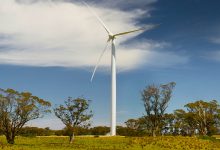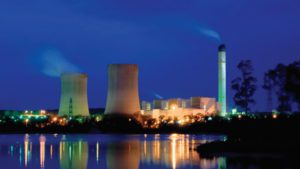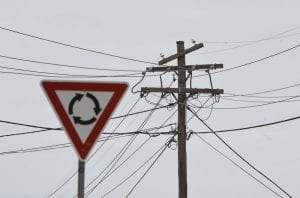Goldwind Australia will consider the use of biofuels, or renewable hydrogen, to power a new gas-battery hybrid project that has received financial backing from the NSW government, and is likely to be located near the Gullen Range wind and solar complex.
Goldwind secured $10 million in funding under the NSW government’s Emerging Energy Program, which will see a 12MW/4MWh battery system, along with six 12MW gas reciprocating engines, co-located at one of Goldwind’s existing renewable energy projects in New South Wales.
While the project is set to utilise six fossil-fuelled gas turbines, Goldwind Australia has said that it is exploring the use of dual fuel reciprocating engines, which would provide an opportunity to run the turbines using a renewably sourced biofuel, or the substitution of fossil gas with green hydrogen, “with a view to operating the plant on the lowest possible emissions basis.”
The combination of the battery system with the gas turbines allows for a much rapid response to changing market conditions than conventional gas turbines. Feasibly, the battery system could provide an immediate response to any supply shortfall, allowing electricity to be supplied during the time it takes for the gas turbines to start up.
The project has received funding under the NSW government’s Emerging Energy Program, which is targeting new projects that can provide firming support to the NSW energy system, as it transitions away from coal and towards wind and solar for its electricity supplies.
Goldwind has not confirmed where the hybrid project is set to be located. However, the company has previously received funding from the NSW government to complete a feasibility study into the co-location of a bioethanol fuelled peaker plant at the company’s Gullen Range wind and solar farm.
Goldwind Australia currently operates a 165.5MW wind farm and a 10MW solar farm at the Gullen site, north west of Goulburn. Goldwind’s only other New South Wales based renewables project is the 175MW White Rock wind farm in the New England region.
High-level results of the bioethanol peaker feasibility study were recently published by the NSW government, and showed that by co-locating a peaker plant at an existing renewables plant, it would be possible to maximise the value and utilisation of network and grid connection infrastructure at the site.
The study estimated that 70 per cent of the time, there was at least 100MW of spare capacity in the Gullen solar and wind project’s grid connection, providing ample opportunity for a peaker plant to supply additional power at the site.
The study found the concept to be technically feasible, but the higher upfront capital costs, the currently high costs of bioethanol fuels, and the currently limited supply of such fuels in Australia posed difficulties. The clear benefit of the biofuel would be substantially reduced greenhouse gas emissions.

“While it is technically feasible to connect a bio-ethanol peaker at the site, the high running costs mean the peaker would likely only operate when market prices are very high—approximately 10 to 15 hours per year —based on current electricity and fuel prices,” the study summary said.
“Finding a reliable and cost-effective fuel supply could be challenging, as the potential volume required is large and there are relatively few domestic producers of this scale.”
“The financial viability of the project is uncertain. A second-hand turbine or mixing in cheaper fossil fuels with the bio-ethanol could help. However, while this concept would provide low-emission generation, the plant would no longer be wholly renewable.”
The results of the study, completed by consultants AECOM, may have influenced Goldwind’s decision to ultimately pursue gas fired generators, with the capability of operating on alternate fuel sources like biofuels or hydrogen.
Goldwind Australia’s managing director, John Titchen, said that project would become one of the first integrated gas, batteries and renewables projects in Australia.
“Goldwind Australia is very pleased to be awarded funding for the proposed hybrid dispatchable renewable energy project under the NSW Government’s Emerging Energy program. The project is in response to the growing demand for low emission dispatchable generation sources,” Titchen said.
The 84MW Goldwind hybrid project was one of four projects that have shared in $37.5 million of NSW government funding to support the deployment of big batteries across the state, as announced on Saturday.










